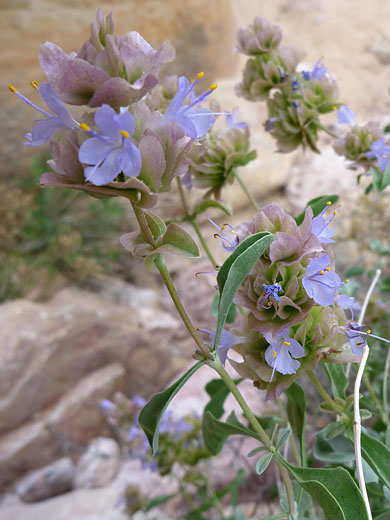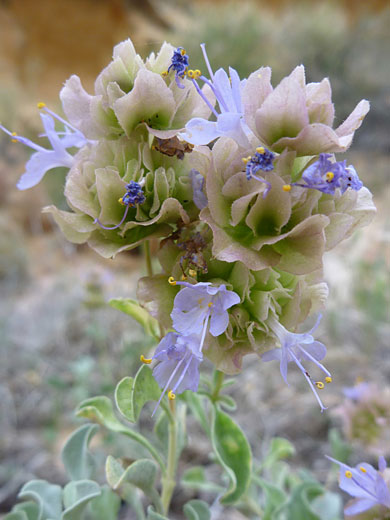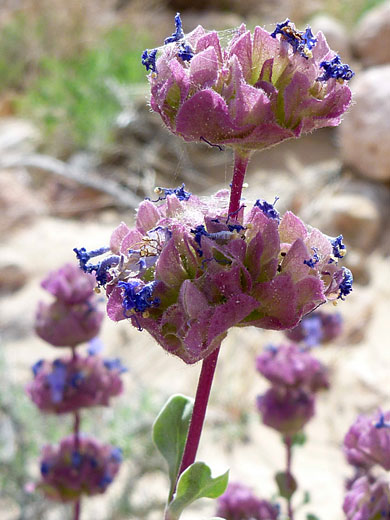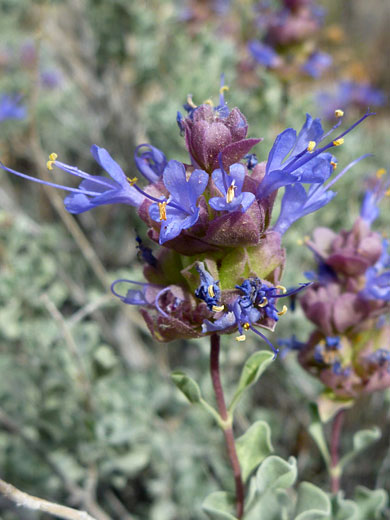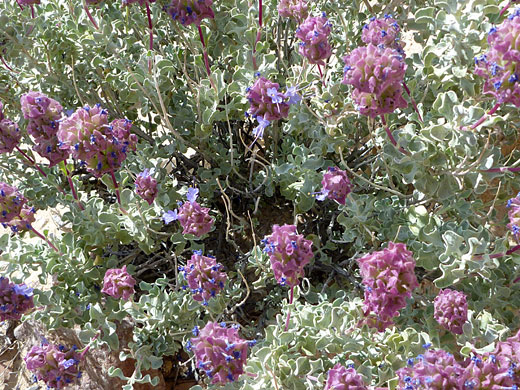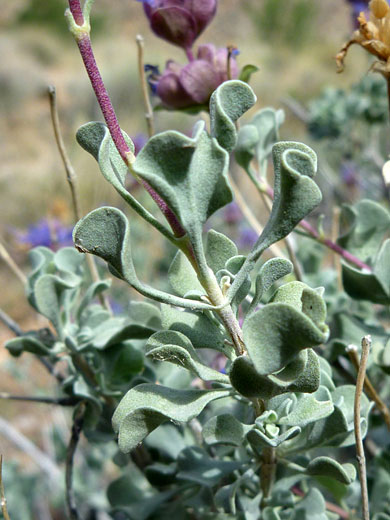Common names:
Blue sage, desert sage, grey-ball sage, tobacco sage, mint sage
Family:
Scientific name:
Salvia dorrii
Main flower color:
Range:
Nevada and adjoining areas of the surrounding states, and north to Washington
Height:
Between 8 and 30 feet
Habitat:
Dry hillsides and plains
Leaves:
Grey-green, opposite, lanceolate, up to 1.5 inches long, wavy edges and rounded tips
Season:
April to July
The blue-lobed, bilaterally symmetric flowers of salvia dorrii are surrounded by thin, hairy, pinkish-purple bracts, forming a roughly spherical cluster at the tip of a greenish-purple stalk; often there are one or more other clusters a little further down. The corolla opens into two lips; the lower is divided into three pointed lobes (one large, two small) while the upper forms two rounded lobes. The two yellow-tipped stamens and one style both project some way beyond the lobes. The flowers turn darker blue as they wither, while the bracts become darker purple.
Plants branch freely and can form extensive clumps, over 2 feet high and several feet wide. Stems become woody towards the base. The leaves, and the reddish upper stems, have a covering of small white scales.
Plants branch freely and can form extensive clumps, over 2 feet high and several feet wide. Stems become woody towards the base. The leaves, and the reddish upper stems, have a covering of small white scales.
All Contents © Copyright The American Southwest | Comments and Questions | Contribute | Site Map


